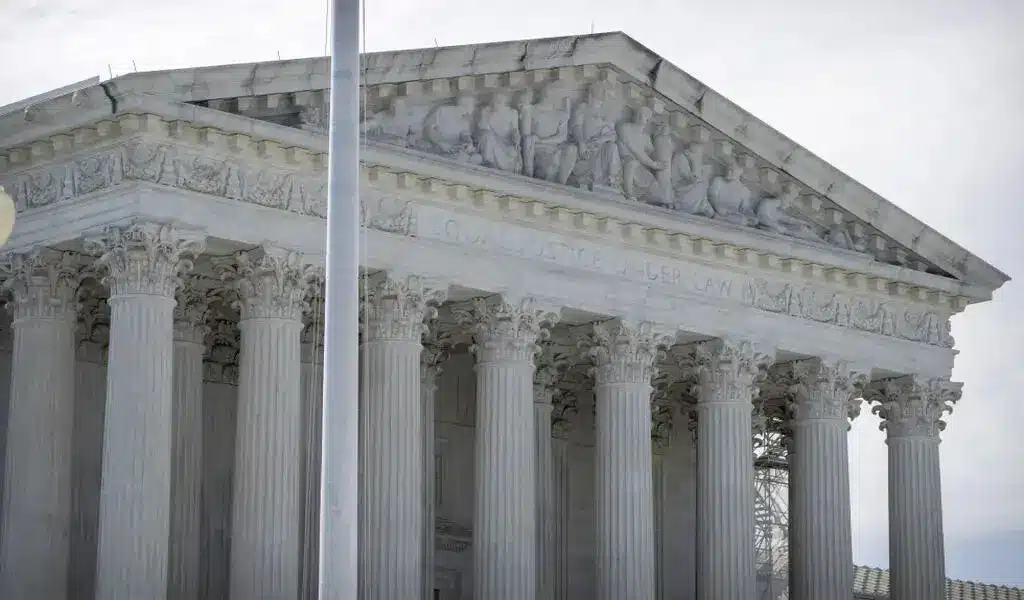News
US Inflation Surges in August, Core Inflation Shows Stability

(CTN News) – For the second month, rising petrol costs drove up US inflation in August. However, the Bureau of Labour Statistics said on Wednesday that core inflation, which excludes the more variable costs of food and energy, has continued to decline.
Inflation was measured by a 3.7% year-over-year increase in the Consumer Price Index in August, up from July’s 3.2% increase. That’s warmer than the 3.6% yearly pace that Refinitiv forecasted from economists. August’s price increase of 0.6% contrasted favorably to July’s 0.2% price increase.
As a result of the Federal Reserve’s 11 rate hikes, core inflation dropped to 4.3% from 4.7% for the 12 months ending in August, the smallest pace since September 2021. In August, core inflation increased by 0.3% month-over-month, marking a notable uptick for the first time since February. The Federal Reserve now pays more attention to the rate of core inflation.
The inflation report released on Wednesday is consistent with the Fed holding off on rate hikes at their upcoming meeting to discuss monetary policy.
The Dow rose 0.1%, the S&P 500 gained 0.2%, and the Nasdaq Composite gained 0.4% after August’s CPI data announced, indicating a small increase in US stocks.
More than half of the acceleration in the CPI in August can be attributed to the rise in petrol costs. The petrol component of the CPI surged 10.6% in August, compared to a mere 0.2% increase in the previous month.
In August, the petrol component of the overall energy index rose 5.6% from the previous month. Housing inflation has been on the rise for some time now.
“Overall inflation has also fallen substantially over the last year, but I know last month’s increase in petrol prices put a strain on family budgets,” Vice President Joe Biden said in a statement on Wednesday, referencing the recent increase in petrol prices. That’s why I’m so determined to keep energy costs low, especially by increasing our energy security through investments in renewable sources.
Oil prices worldwide have risen as OPEC+ countries have reduced output to meet surging demand. Oil exports were halted this week after a devastating flood in Libya, which will lead to higher petrol prices.
On Wednesday, the average price of ordinary petrol across the country hit $3.85, the highest price in 10 months, as reported by AAA. Higher petrol costs are a clear sign of inflation, which could dampen the spirits of American consumers.
Economists do not believe the recent volatility in energy prices will curb inflation in the coming months.
Sarah House, senior economist at Wells Fargo, said in an interview with CNN that the impact of rising energy prices on consumers’ ability to pay for essentials like food and housing is minimal.
She said, “If energy price increases persist, they could trickle down into the core, making it more difficult for the Fed to return inflation to its 2% target on a sustained basis.” However, she predicted that this dynamic would be “overwhelmed” by the ongoing unwinding of supply and even demand distortions that have been present since the pandemic.
Due to various reasons predicted to help inflation’s decline, such as weaker consumer spending and a cooling US job market, the Fed is still widely expected to leave rates constant next week, while an additional rate hike beyond September remains possible.
An analyst note from Glenmede’s chief investment strategist and researcher, Jason Pride, stated that “today’s inflation report likely does not move the needle much for the [central bank’s policy committee] ahead of its session next week — no rate hike remains the base case, especially given the considerable tightening that has yet to completely work its way through the economy.”
“However, the pickup in inflation may increase the likelihood of additional tightening before year’s end, as putting the inflation genie back in the bottle does not appear as straightforward as some would have hoped.”
According to the CME FedWatch Tool, the financial markets are pricing in a 97% chance of a pause and a 58% possibility of another pause in November.
Inflation slows to the Fed’s 2% target without a substantial rise in unemployment or a recession; this is the so-called “soft landing” scenario that Fed officials still hope to achieve.
Since reaching its highest point in four decades in June 2022, inflation in the United States, as measured by the Consumer Price Index, has progressively decreased as the economy and the employment market have remained stable. That’s despite the Federal Reserve’s biggest push for rate increases since the 1980s.
The Fed may reduce economic activity, but it’s hard to say how much or when. According to a recent report by the Chicago Fed, the present interest rate level is sufficient to bring inflation back down to 2% by mid-2024 without causing a recession.
However, other economists believe the Fed still has room to increase interest rates.
Last Monday, Federal Reserve Bank of Dallas President Lorie Logan indicated, “Another skip could be appropriate when we meet later this month.”
However, skipping does not always mean quitting. More analysis of the statistics and outlook in the coming months may show that we need to take additional steps to combat inflation.
Despite the risk of fluctuating energy prices, inflation is anticipated to ease for the remainder of 2018.
“Looking ahead, easing demand for goods and services, the pass-through from softer home and rent price inflation, and cooling wage growth should lead to further disinflation,” noted EY-Parthenon’s chief Economist Gregory Daco.
The CPI component that most directly affects housing expenses saw its smallest month-over-month increase (0.3%) since January 2022 in August. According to a recent report from the San Francisco Fed, negative shelter inflation could occur in the second half of 2024. A lower CPI would result from such.
Inflation may lose some of its momenta in the coming months as the US labor market is forecast to soften.
To effectively combat inflation, Federal Reserve Chair Jerome Powell has stated that the central bank must “come into better balance” in the labor market.
In the current US labour market, there are millions of open positions but not nearly as many people looking for work. This mismatch contributes to price inflation since firms must pay higher rates to attract and retain workers.

News
Google’s Search Dominance Is Unwinding, But Still Accounting 48% Search Revenue

Google is so closely associated with its key product that its name is a verb that signifies “search.” However, Google’s dominance in that sector is dwindling.
According to eMarketer, Google will lose control of the US search industry for the first time in decades next year.
Google will remain the dominant search player, accounting for 48% of American search advertising revenue. And, remarkably, Google is still increasing its sales in the field, despite being the dominating player in search since the early days of the George W. Bush administration. However, Amazon is growing at a quicker rate.
Google’s Search Dominance Is Unwinding
Amazon will hold over a quarter of US search ad dollars next year, rising to 27% by 2026, while Google will fall even more, according to eMarketer.
The Wall Street Journal was first to report on the forecast.
Lest you think you’ll have to switch to Bing or Yahoo, this isn’t the end of Google or anything really near.
Google is the fourth-most valued public firm in the world. Its market worth is $2.1 trillion, trailing just Apple, Microsoft, and the AI chip darling Nvidia. It also maintains its dominance in other industries, such as display advertisements, where it dominates alongside Facebook’s parent firm Meta, and video ads on YouTube.
To put those “other” firms in context, each is worth more than Delta Air Lines’ total market value. So, yeah, Google is not going anywhere.
Nonetheless, Google faces numerous dangers to its operations, particularly from antitrust regulators.
On Monday, a federal judge in San Francisco ruled that Google must open up its Google Play Store to competitors, dealing a significant blow to the firm in its long-running battle with Fortnite creator Epic Games. Google announced that it would appeal the verdict.
In August, a federal judge ruled that Google has an illegal monopoly on search. That verdict could lead to the dissolution of the company’s search operation. Another antitrust lawsuit filed last month accuses Google of abusing its dominance in the online advertising business.
Meanwhile, European regulators have compelled Google to follow tough new standards, which have resulted in multiple $1 billion-plus fines.

Pixa Bay
Google’s Search Dominance Is Unwinding
On top of that, the marketplace is becoming more difficult on its own.
TikTok, the fastest-growing social network, is expanding into the search market. And Amazon has accomplished something few other digital titans have done to date: it has established a habit.
When you want to buy anything, you usually go to Amazon, not Google. Amazon then buys adverts to push companies’ products to the top of your search results, increasing sales and earning Amazon a greater portion of the revenue. According to eMarketer, it is expected to generate $27.8 billion in search revenue in the United States next year, trailing only Google’s $62.9 billion total.
And then there’s AI, the technology that (supposedly) will change everything.
Why search in stilted language for “kendall jenner why bad bunny breakup” or “police moving violation driver rights no stop sign” when you can just ask OpenAI’s ChatGPT, “What’s going on with Kendall Jenner and Bad Bunny?” in “I need help fighting a moving violation involving a stop sign that wasn’t visible.” Google is working on exactly this technology with its Gemini product, but its success is far from guaranteed, especially with Apple collaborating with OpenAI and other businesses rapidly joining the market.
A Google spokeswoman referred to a blog post from last week in which the company unveiled ads in its AI overviews (the AI-generated text that appears at the top of search results). It’s Google’s way of expressing its ability to profit on a changing marketplace while retaining its business, even as its consumers steadily transition to ask-and-answer AI and away from search.

Google has long used a single catchphrase to defend itself against opponents who claim it is a monopoly abusing its power: competition is only a click away. Until recently, that seemed comically obtuse. Really? We are going to switch to Bing? Or Duck Duck Go? Give me a break.
But today, it feels more like reality.
Google is in no danger of disappearing. However, every highly dominating company faces some type of reckoning over time. GE, a Dow mainstay for more than a century, was broken up last year and is now a shell of its previous dominance. Sears declared bankruptcy in 2022 and is virtually out of business. US Steel, long the foundation of American manufacturing, is attempting to sell itself to a Japanese corporation.
SOURCE | CNN
News
2024 | Supreme Court Won’t Hear Appeal From Elon Musk’s X Platform Over Warrant In Trump Case

Washington — Trump Media, The Supreme Court announced Monday that it will not hear an appeal from social media platform X about a search warrant acquired by prosecutors in the election meddling case against former President Donald Trump.
The justices did not explain their rationale, and there were no recorded dissents.
The firm, which was known as Twitter before being purchased by billionaire Elon Musk, claims a nondisclosure order that prevented it from informing Trump about the warrant obtained by special counsel Jack Smith’s team violated its First Amendment rights.
The business also claims Trump should have had an opportunity to exercise executive privilege. If not reined in, the government may employ similar tactics to intercept additional privileged communications, their lawyers contended.
Supreme Court Won’t Hear Appeal From Elon Musk’s X Platform Over Warrant In Trump Case
Two neutral electronic privacy groups also joined in, urging the high court to hear the case on First Amendment grounds.
Prosecutors, however, claim that the corporation never shown that Trump utilized the account for official purposes, therefore executive privilege is not a problem. A lower court also determined that informing Trump could have compromised the current probe.

Trump utilized his Twitter account in the weeks preceding up to his supporters’ attack on the Capitol on January 6, 2021, to spread false assertions about the election, which prosecutors claim were intended to create doubt in the democratic process.
The indictment describes how Trump used his Twitter account to encourage his followers to travel to Washington on Jan. 6, pressuring Vice President Mike Pence to reject the certification, and falsely claiming that the Capitol crowd, which battered police officers and destroyed glass, was peaceful.
Supreme Court Won’t Hear Appeal From Elon Musk’s X Platform Over Warrant In Trump Case
That case is now moving forward following the Supreme Court’s verdict in July, which granted Trump full immunity from criminal prosecution as a former president.
The warrant arrived at Twitter amid quick changes implemented by Musk, who bought the company in 2022 and has since cut off most of its workforce, including those dedicated to combating disinformation and hate speech.
SOURCE | AP
News
The Supreme Court Turns Down Biden’s Government Appeal in a Texas Emergency Abortion Matter.

(VOR News) – A ruling that prohibits emergency abortions that contravene the Supreme Court law in the state of Texas, which has one of the most stringent abortion restrictions in the country, has been upheld by the Supreme Court of the United States. The United States Supreme Court upheld this decision.
The justices did not provide any specifics regarding the underlying reasons for their decision to uphold an order from a lower court that declared hospitals cannot be legally obligated to administer abortions if doing so would violate the law in the state of Texas.
Institutions are not required to perform abortions, as stipulated in the decree. The common populace did not investigate any opposing viewpoints. The decision was made just weeks before a presidential election that brought abortion to the forefront of the political agenda.
This decision follows the 2022 Supreme Court ruling that ended abortion nationwide.
In response to a request from the administration of Vice President Joe Biden to overturn the lower court’s decision, the justices expressed their disapproval.
The government contends that hospitals are obligated to perform abortions in compliance with federal legislation when the health or life of an expectant patient is in an exceedingly precarious condition.
This is the case in regions where the procedure is prohibited. The difficulty hospitals in Texas and other states are experiencing in determining whether or not routine care could be in violation of stringent state laws that prohibit abortion has resulted in an increase in the number of complaints concerning pregnant women who are experiencing medical distress being turned away from emergency rooms.
The administration cited the Supreme Court’s ruling in a case that bore a striking resemblance to the one that was presented to it in Idaho at the beginning of the year. The justices took a limited decision in that case to allow the continuation of emergency abortions without interruption while a lawsuit was still being heard.
In contrast, Texas has been a vocal proponent of the injunction’s continued enforcement. Texas has argued that its circumstances are distinct from those of Idaho, as the state does have an exemption for situations that pose a significant hazard to the health of an expectant patient.
According to the state, the discrepancy is the result of this exemption. The state of Idaho had a provision that safeguarded a woman’s life when the issue was first broached; however, it did not include protection for her health.
Certified medical practitioners are not obligated to wait until a woman’s life is in imminent peril before they are legally permitted to perform an abortion, as determined by the state supreme court.
The state of Texas highlighted this to the Supreme Court.
Nevertheless, medical professionals have criticized the Texas statute as being perilously ambiguous, and a medical board has declined to provide a list of all the disorders that are eligible for an exception. Furthermore, the statute has been criticized for its hazardous ambiguity.
For an extended period, termination of pregnancies has been a standard procedure in medical treatment for individuals who have been experiencing significant issues. It is implemented in this manner to prevent catastrophic outcomes, such as sepsis, organ failure, and other severe scenarios.
Nevertheless, medical professionals and hospitals in Texas and other states with strict abortion laws have noted that it is uncertain whether or not these terminations could be in violation of abortion prohibitions that include the possibility of a prison sentence. This is the case in regions where abortion prohibitions are exceedingly restrictive.
Following the Supreme Court’s decision to overturn Roe v. Wade, which resulted in restrictions on the rights of women to have abortions in several Republican-ruled states, the Texas case was revisited in 2022.
As per the orders that were disclosed by the administration of Vice President Joe Biden, hospitals are still required to provide abortions in cases that are classified as dire emergency.
As stipulated in a piece of health care legislation, the majority of hospitals are obligated to provide medical assistance to patients who are experiencing medical distress. This is in accordance with the law.
The state of Texas maintained that hospitals should not be obligated to provide abortions throughout the litigation, as doing so would violate the state’s constitutional prohibition on abortions. In its January judgment, the 5th United States Circuit Court of Appeals concurred with the state and acknowledged that the administration had exceeded its authority.
SOURCE: AP
SEE ALSO:
Could Last-Minute Surprises Derail Kamala Harris’ Campaign? “Nostradamus” Explains the US Poll.
-

 News4 years ago
News4 years agoLet’s Know About Ultra High Net Worth Individual
-
Entertainment2 years ago
Mabelle Prior: The Voice of Hope, Resilience, and Diversity Inspiring Generations
-
News11 years ago
Enviromental Groups Tell Mekong Leaders Lao Dam Evaluation Process Flawed
-

 Health4 years ago
Health4 years agoHow Much Ivermectin Should You Take?
-

 Tech3 years ago
Tech3 years agoTop Forex Brokers of 2023: Reviews and Analysis for Successful Trading
-

 Lifestyles3 years ago
Lifestyles3 years agoAries Soulmate Signs
-

 Entertainment3 years ago
Entertainment3 years agoWhat Should I Do If Disney Plus Keeps Logging Me Out of TV?
-

 Health3 years ago
Health3 years agoCan I Buy Ivermectin Without A Prescription in the USA?


